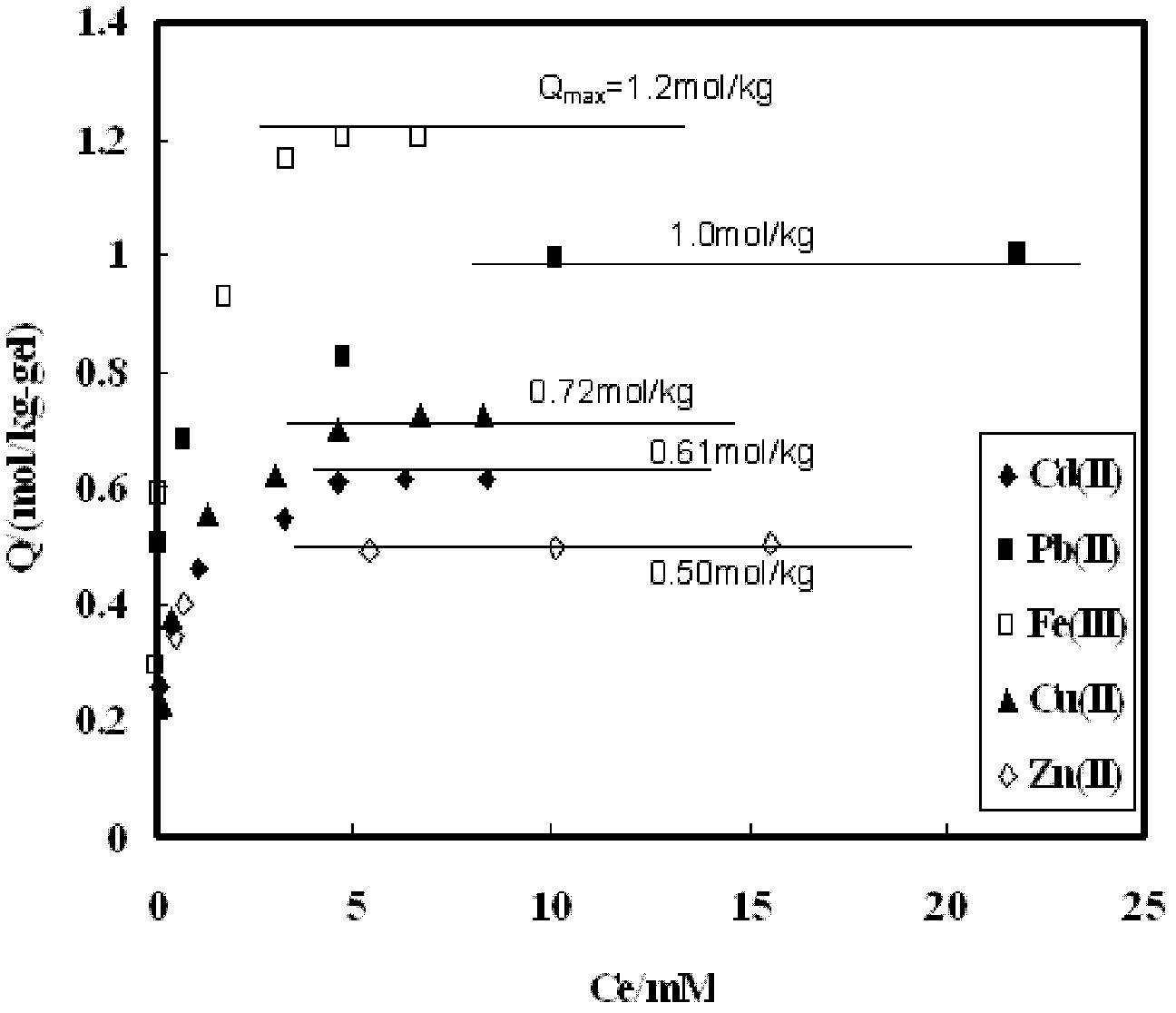Method for adsorption and removal of heavy metals and dye of waste water by garlic waste
A garlic waste and heavy metal technology, applied in the direction of adsorption water/sewage treatment, chemical instruments and methods, textile industry wastewater treatment, etc., to achieve the effects of reasonable design, reduced treatment cost, and shortened treatment cycle
- Summary
- Abstract
- Description
- Claims
- Application Information
AI Technical Summary
Problems solved by technology
Method used
Image
Examples
Embodiment 1
[0023] Embodiment 1: get 100 grams of garlic waste, cut into pieces no more than 1 cm in length, add 100 milliliters of water, add 5 grams of calcium hydroxide and 5 grams of sodium hydroxide, and stir vigorously for 12 hours to keep the pH value of the mixed solution At 12, filter, wash the filter cake with water until neutral, and then send it into a vacuum oven at a temperature of 60 o C Drying: crush and sieve the dried material, and collect particles below 40 mesh to be used as an adsorbent. Prepare a heavy metal ion solution with a concentration of 2mmol / l, mix it with the adsorbent particles at a ratio of 1.6g / l, shake at room temperature for 12 hours, filter and remove the adsorbent particles, and send the metal ion concentration together with the filtrate and the solution before adsorption Analysis and detection, the analysis and detection instrument can be a flame atomic absorption spectrophotometer. The adsorption amount is equal to the mass or molar amount of meta...
Embodiment 2
[0025] Take 100 grams of garlic waste, cut it into pieces no longer than 1 cm, add 100 ml of water, 10 grams of calcium oxide and 5 grams of sodium hydroxide to keep the pH of the mixed solution at 12.5, stir for 14 hours, and filter , wash the filter cake with water until neutral, and then send it into a vacuum oven at a temperature of 70 o C Drying: crush and sieve the dried material, and collect particles below 40 mesh to be used as an adsorbent. Prepare a Congo red solution with a concentration of 2mmol / l, mix it with the adsorbent particles at a ratio of 3.2g / l, shake at room temperature for 24 hours, filter and remove the adsorbent particles, and send the filtrate and the pre-adsorption solution together to the Congo red molecules For concentration analysis and detection, the analysis and detection instrument can use a UV-visible spectrophotometer. The adsorption amount is equal to the mass or molar amount of the dye adsorbed by the adsorbent particles per unit mass. Th...
Embodiment 3
[0026] Embodiment 3: Get 100 grams of garlic waste, cut into pieces no more than 1 cm in length, add 90 milliliters of water, add 10 grams of magnesium oxide, add 5 grams of calcium hydroxide, keep the pH value of the mixed solution at 12, stir for 16 Hours later, filter, wash the filter cake with water until neutral, and then send it into a vacuum oven at a temperature of 80 o C Drying: crush and sieve the dried material, and collect particles below 40 mesh to be used as an adsorbent. Prepare a methylene blue solution with a concentration of 2mmol / l, mix it with the adsorbent particles at a ratio of 4.8g / l, shake at room temperature for 18 hours, filter and remove the adsorbent particles, and send the filtrate and the solution before adsorption together to Congo red molecular concentration Analysis and detection, the analysis and detection instrument can adopt ultraviolet-visible spectrophotometer. The adsorption amount is equal to the mass or molar amount of the dye adsorbe...
PUM
 Login to View More
Login to View More Abstract
Description
Claims
Application Information
 Login to View More
Login to View More - R&D
- Intellectual Property
- Life Sciences
- Materials
- Tech Scout
- Unparalleled Data Quality
- Higher Quality Content
- 60% Fewer Hallucinations
Browse by: Latest US Patents, China's latest patents, Technical Efficacy Thesaurus, Application Domain, Technology Topic, Popular Technical Reports.
© 2025 PatSnap. All rights reserved.Legal|Privacy policy|Modern Slavery Act Transparency Statement|Sitemap|About US| Contact US: help@patsnap.com



